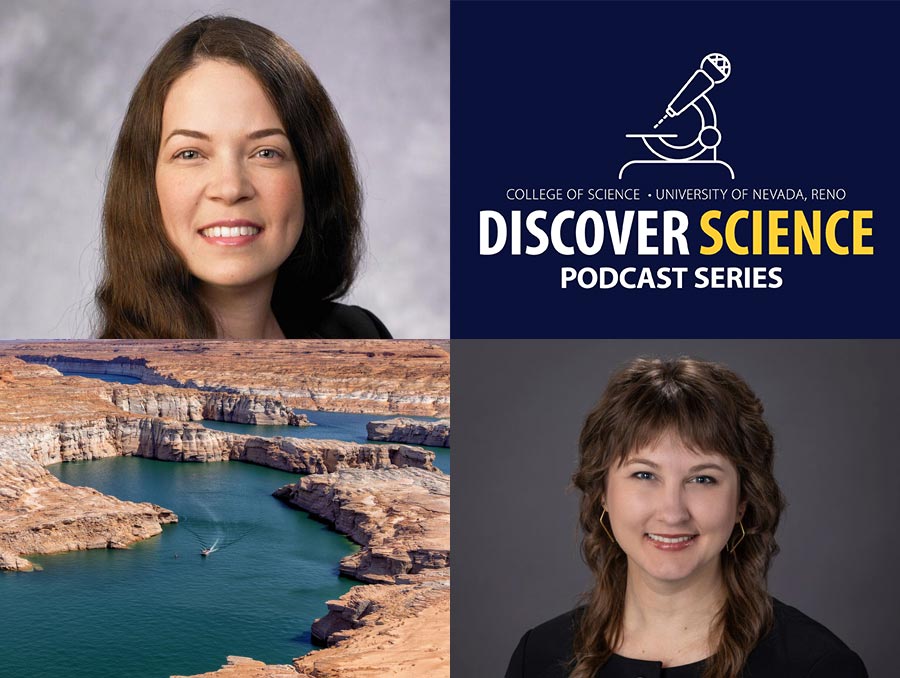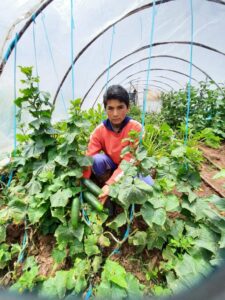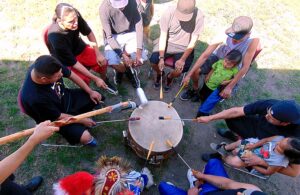Ancient herbal remedies possess a rich history closely intertwined with the evolution of traditional medicine and ancient medicine across various cultures. These time-honored practices provide a wealth of knowledge regarding the ability of plants and herbal properties to promote health and well-being.
This exploration aims to cover the nature of these remedies, their historical applications, and the essential role played by traditional healers in traditional healing and herbalism. Furthermore, it will delve into the scientific principles that support their effectiveness and the therapeutic uses of these remedies, identify common remedies that remain in use today, and discuss methods for safely integrating them into modern lifestyles.
Whether one identifies as a curious skeptic or a seasoned herbal enthusiast, this exploration highlights the lasting legacy of ancient herbal healing.
What Are Ancient Herbal Remedies?
.jpg_00.jpeg)
Ancient herbal remedies have been employed for centuries across numerous cultures, forming the cornerstone of traditional medicine systems such as Ayurvedic medicine and Traditional Chinese Medicine.
These plant-based remedies encompass a wide array of medicinal plants and healing herbs recognized for their health benefits and healing properties, promoting a holistic approach to wellness.
The historical application of these remedies demonstrates a profound understanding of the mind-body connection, wherein wellness and holistic health were attained through natural ingredients, including essential oils, herbal tinctures, and herbal teas derived from various medicinal herbs.
How Were Ancient Herbal Remedies Used?
Ancient herbal remedies were employed in a variety of methods, frequently by traditional healers who integrated their knowledge of herbal pharmacology, ethnobotany, and folk medicine to address a wide range of ailments.
These remedies encompassed treatments such as poultices, herbal syrups, and herbal infusions, each specifically formulated to target particular health concerns, including digestive health, inflammation, immune support, and respiratory health.
This practice demonstrates a profound understanding of the therapeutic properties of plant-based remedies.
What Is the Role of Traditional Healers in Using Herbal Remedies?
Traditional healers occupy a crucial position in the application of herbal remedies, serving as custodians of medicinal knowledge and practices deeply rooted in their cultural heritage and herbal traditions. Commonly referred to as herbalists, these practitioners are responsible for identifying and preparing herbal medicines while also offering holistic patient care that considers the physical, emotional, and spiritual well-being of individuals, thereby ensuring the safe application of herbal treatments.
Through rigorous training, often transmitted across generations, traditional healers develop an extensive understanding of local flora and fauna, enabling them to effectively harness the healing properties of various plants and herbs. Beyond their extensive knowledge, these practitioners actively engage with their communities to cultivate trust and provide culturally sensitive care, which is vital for successful healing outcomes.
Traditional healers frequently source herbs from their immediate environment, employing sustainable harvesting techniques and integrating traditional rituals into their herbal consultations and processes. By preparing decoctions, tinctures, and infusions, these healers ensure that each remedy is customized to meet the unique needs of the patient, thereby enhancing community health and reinforcing cultural identity.
What Is the Science Behind Ancient Herbal Remedies?
The principles underlying ancient herbal remedies are grounded in phytotherapy, a discipline that investigates the medicinal properties of plants and their bioactive compounds, contributing to the science of herbalism.
Contemporary botanical research has increasingly validated numerous traditional practices and the therapeutic uses of various medicinal plants and their active components.
This ongoing research is paving the way for evidence-based studies that affirm the efficacy of herbal medicine and alternative medicine in managing chronic conditions and enhancing overall health.
How Do These Remedies Work in the Body?
Ancient herbal remedies exert their effects on the body through a variety of therapeutic mechanisms, utilizing the natural healing properties of active compounds to promote health and well-being. These remedies can offer immune support, mitigate inflammation, and enhance digestive health, ultimately contributing to a balanced physiological state and overall wellness.
The bioactive compounds present in these herbs interact intricately with various bodily systems, modulating essential processes such as cellular signaling, metabolic regulation, and the response to oxidative stress through natural healing. For instance, flavonoids and terpenes found in herbs like turmeric and ginger have demonstrated significant anti-inflammatory effects, making them valuable anti-inflammatory herbs that can alleviate joint pain and improve mobility.
Additionally, adaptogenic herbs, such as ashwagandha, play a role in influencing the body’s stress response, thereby promoting mental clarity and emotional resilience. By utilizing these natural resources, individuals can capitalize on the benefits of established healing practices and folk medicine, fostering a holistic approach to their health journey.
What Are the Active Compounds in These Remedies?
.jpg_01.jpeg)
Active compounds present in ancient herbal remedies, such as flavonoids, alkaloids, and terpenes, are integral to their pharmacological effects, herbal applications, and associated health benefits. A comprehensive understanding of these bioactive compounds is essential for effective herbal pharmacology, as they significantly contribute to the safety and efficacy of herbal extracts and herbal formulations.
These compounds exhibit a diverse array of therapeutic properties, which have been recognized in both traditional practices and contemporary scientific research, bridging ancient practices with modern herbalism. For instance, flavonoids are renowned for their antioxidant properties, which may help mitigate oxidative stress and inflammation, potentially reducing the risk of chronic diseases.
In contrast, alkaloids frequently demonstrate antimicrobial and analgesic effects, rendering them valuable in the treatment of various health conditions. Terpenes are also acknowledged for their ability to enhance mood and alleviate stress.
Ongoing studies continue to reveal the complexity and potential of these compounds, underscoring their importance not only in historical contexts but also in the modern medical field’s pursuit of safer, alternative medicine through natural treatment alternatives.
How Are These Remedies Extracted and Prepared?
The extraction and preparation of ancient herbal remedies encompass a variety of methods, including tinctures, herbal teas, and poultices, each specifically designed to maximize the therapeutic potential of the herbal ingredients and herbal compounds. These preparation techniques demonstrate a comprehensive understanding of the properties of the plants and their active compounds, thereby ensuring effective delivery for natural healing.
Practitioners employ methods such as cold infusion, steam distillation, and solvent extraction with the objective of preserving the integrity of bioactive compounds and active ingredients while enhancing the efficacy of the final products. For example, tinctures utilize alcohol to extract potent elements, resulting in products with a longer shelf life and concentrated effects, whereas herbal teas leverage the ability of water to rapidly draw out nutrients for immediate use.
Each preparation method not only honors the natural essence of the plant but also prioritizes safety during preparation, ensuring minimal degradation of beneficial constituents. This deliberate approach highlights the significance of integrating traditional practices with contemporary knowledge in the field of herbal medicine.
What Are the Most Common Ancient Herbal Remedies Still Used Today?
Numerous ancient herbal remedies and their historical remedies have demonstrated their enduring efficacy and continue to find application in contemporary practices, highlighting their sustained significance in holistic health approaches.
Remedies such as these therapeutic herbs:
- turmeric for inflammation,
- echinacea for immune support,
- chamomile for digestive health
serve as prime examples of the continued utilization of these natural therapies, herbal supplements, and herbal applications today.
What Are Their Uses and Benefits?
The applications and advantages of ancient herbal remedies are diverse, functioning as effective tools for natural healing, botanical healing, and the enhancement of overall wellness. These herbal treatments have the potential to address a range of chronic conditions, support immune functions, alleviate stress, and promote digestive health, thereby contributing significantly to the holistic health landscape and preventive health.
For example, ginger is well-regarded for its anti-inflammatory properties, making it a favored option for alleviating symptoms associated with arthritis and indigestion, acting as a digestive aid. Likewise, turmeric, which contains the active compound curcumin, has been shown to be effective in reducing inflammation and strengthening immune responses, while also being researched for its potential role in cancer prevention, highlighting its nutritional benefits.
Additionally, ashwagandha is increasingly recognized for its efficacy in alleviating stress and anxiety, thereby enhancing overall mental well-being and stress relief. The incorporation of these remedies into contemporary health practices not only highlights their ongoing relevance but also reflects a growing inclination among individuals towards natural treatments as safer alternatives to conventional medicine, supported by scientific validation and herbal research.
Are There Any Modern Scientific Studies Supporting Their Effectiveness?
Numerous contemporary scientific studies and evidence-based literature have emerged to substantiate the effectiveness of ancient herbal remedies, thereby validating centuries of traditional healing knowledge. Clinical research focusing on the safety and efficacy of herbal treatments has yielded promising results, underscoring the relevance of these remedies in modern holistic health practices.
Recent investigations have demonstrated that specific herbal treatments, such as turmeric for inflammation and ginger for digestive health, contain active ingredients and bioactive compounds capable of producing measurable therapeutic effects, highlighting their therapeutic uses in herbal medicine.
While these findings are encouraging, researchers advise caution, as not all herbal products undergo rigorous testing for potency and purity. Additionally, the potential for interactions with pharmaceutical drugs is a significant consideration, highlighting the necessity for informed usage and adherence to established herbal guidelines to ensure the safety and efficacy of herbal applications.
As interest in holistic healthcare continues to grow, it is essential to understand both the benefits and limitations of herbal applications to ensure safety and optimize outcomes in therapeutic practices. This understanding forms a bridge between traditional healing practices and modern health trends, emphasizing the importance of herbal consultations and preventive health measures.
Are There Any Risks or Side Effects to Using Ancient Herbal Remedies?
.jpg_10.jpeg)
Ancient herbal remedies, rooted in traditional healing and ethnobotany, provide a variety of health benefits; however, it is essential to acknowledge the inherent risks and potential side effects associated with their use in alternative medicine.
Understanding these risks is crucial for effective patient care, as it ensures that individuals are informed about the safety of herbal products and adhere to appropriate herbal guidelines, drawing on the science of herbalism and botanical healing traditions.
What Precautions Should Be Taken When Using These Remedies?
Precautions are essential when utilizing ancient herbal remedies to ensure both safety and efficacy, particularly in relation to herbal dosage and quality control. Adhering to established herbal guidelines minimizes risks and enables users to fully benefit from the therapeutic properties of these natural treatments. This approach is supported by herbal pharmacognosy and herbal research, which guide effective herbal applications today.
To maximize the benefits while mitigating potential hazards, it is imperative to conduct thorough research and procure high-quality products from reputable suppliers. Users should also seek guidance from healthcare professionals prior to initiating any new herbal regimen, particularly those who are currently taking prescription medications, as interactions may occur. This underscores the importance of herbal consultations and understanding potential herbal combinations and interactions.
Understanding the appropriate herbal dosages is crucial, as excessive amounts can result in adverse effects rather than therapeutic benefits. Regular monitoring of personal responses to these remedies will further enhance safety. By exercising diligence in these areas, users can engage with herbal traditions in a responsible and effective manner, appreciating the historical remedies and cultural significance of these ancient practices.
Are There Any Interactions with Medications or Other Herbs?
Interactions between ancient herbal remedies and conventional medications, as well as other herbs, represent a significant consideration for individuals seeking holistic health solutions. Understanding these interactions is essential for ensuring the safety of herbal remedies and avoiding potential side effects that could adversely affect health outcomes. The study of ethnopharmacology and contemporary herbalism can provide insights into these complex interactions.
For example, when an individual combines St. John’s Wort, a widely used herbal remedy for depression, with prescription antidepressants, it may lead to serotonin syndrome, a serious condition characterized by an excess of serotonin in the brain. Similarly, ginkgo biloba, known for its cognitive health benefits, may interact with anticoagulant medications, thereby increasing the risk of bleeding. These herbal challenges emphasize the importance of understanding herbal safety and potential interactions.
These examples underscore the importance of consulting healthcare professionals to assess the safety and efficacy of combining various treatments. Only through thorough guidance and understanding of herbal pharmacognosy and phytotherapy can individuals confidently navigate their options and optimize their health without compromising their well-being.
How Can Someone Incorporate Ancient Herbal Remedies into Their Daily Life?
Incorporating ancient herbal remedies into daily life can serve as a transformative measure toward improved wellness and natural healing, drawing on the wisdom of herbal knowledge and the cultural significance of traditional healing practices.
By gaining a comprehensive understanding of various herbal supplements and their applications, individuals can effectively integrate these remedies into their routines, thereby promoting a holistic approach to health. This involves exploring the nutritional benefits and immune support provided by herbal compounds.
What Are Some Tips for Growing and Using These Remedies at Home?
Cultivating and utilizing ancient herbal remedies at home can be a fulfilling endeavor that deepens one’s connection to natural healing practices and herbal culture. By identifying appropriate medicinal plants and understanding their care requirements, individuals can establish a diverse herbal garden that contributes to health and well-being, supporting biodiversity conservation and sustainable practices.
This initiative not only enhances culinary experiences but also provides a sustainable source of natural remedies for various ailments. It is advisable to begin by researching common herbs such as basil, peppermint, and chamomile, which are relatively easy to grow. Designate a sunny location in your garden or utilize containers on your balcony, ensuring that they are equipped with good drainage and nutrient-rich soil. These efforts contribute to the herbal community and the practice of herbal gardening.
Regular watering and occasional pruning will promote vigorous growth, supporting organic herbalism. When the time for harvesting arrives, it is recommended to do so in the morning to ensure optimal potency. These fresh herbs can be dried for long-term storage or used immediately in cooking, teas, and herbal infusions, thus promoting holistic health benefits and engaging with the herbal legacy.
How Can These Remedies Be Used in Combination with Modern Medicine?
.jpg_11.jpeg)
The integration of ancient herbal remedies with modern medicine presents a comprehensive approach to patient care and holistic health. By recognizing the potential of herbal treatments, including Chinese herbal medicine and Ayurvedic medicine, to complement conventional therapies, individuals can enhance their overall well-being and promote effective health management.
This synergy encourages a thorough examination of individual health needs and fosters a collaborative relationship with healthcare providers. Individuals pursuing this dual approach should prioritize open communication, ensuring that all treatment methods—both herbal and pharmaceutical—are shared and discussed, promoting herbal synergism and integrative practices.
Such a partnership empowers patients to make informed decisions, capitalizing on the strengths of both modalities. For example, incorporating herbal supplements may offer additional support in managing symptoms and improving recovery times, while maintaining safety and efficacy through personalized guidance from medical professionals. This embraces the principles of preventive health and health restoration through herbal therapies.
Frequently Asked Questions
What is the science behind ancient herbal remedies?
The science behind ancient herbal remedies involves the use of plants and natural substances to promote healing and wellness. These remedies, rooted in the science of herbalism and plant pharmacology, have been passed down through generations and are still in use today as part of modern herbalism.
How were ancient herbal remedies discovered and developed?
The discovery and development of ancient herbal remedies can be traced back to traditional medicine systems such as Ayurveda, Traditional Chinese Medicine (TCM), and Indigenous healing practices. These remedies, often classified under folk medicine and ethnobotany, were discovered through trial and error and passed down through oral traditions, reflecting the herbal wisdom and historical remedies of diverse cultures.
What is the difference between modern medicine and ancient herbal remedies?
Modern medicine is based on scientific research and often uses synthetic and chemical-based substances, while ancient herbal remedies rely on natural ingredients and holistic approaches to healing. However, many modern medicines are derived from traditional herbal remedies, illustrating the cultural significance and historical impact of healing herbs and botanical research in healthcare.
How do ancient herbal remedies work?
Ancient herbal remedies work by harnessing the healing properties of various plants and natural substances, utilizing their therapeutic herbs and active ingredients. These remedies often target specific ailments or imbalances in the body and aim to restore balance and promote overall wellness, drawing on the principles of botanical healing and alternative medicine.
Are ancient herbal remedies safe to use?
In general, ancient herbal remedies are considered safe to use when used properly, supported by herbal medicine studies and scientific validation. However, it is important to consult with a healthcare professional before trying any new remedy, as some may interact with medications or have potential side effects, emphasizing the need for herbal safety and guidance.
What are some common ancient herbal remedies still in use today?
Some common ancient herbal remedies still in use today include ginger for nausea and inflammation, turmeric for its anti-inflammatory properties, and chamomile for its calming effects. Other popular remedies include garlic for its immune-boosting properties and peppermint for digestive issues. These remedies highlight the health benefits and therapeutic uses of medicinal plants in both historical and modern contexts.

My name is Bruno, I have been a writer for 5 years and I work with website creation. My goal is to provide true information to readers. In fact, on this site I write about cultures and traditions, which I have been passionate about since childhood.




